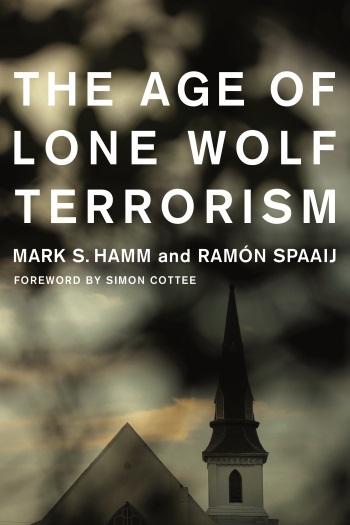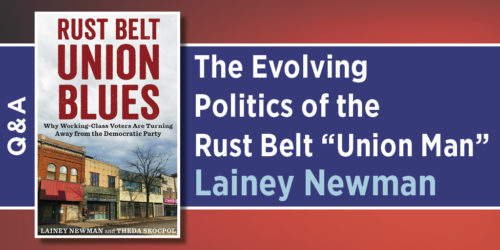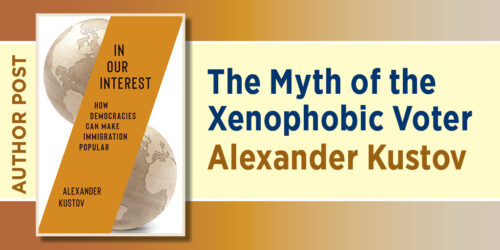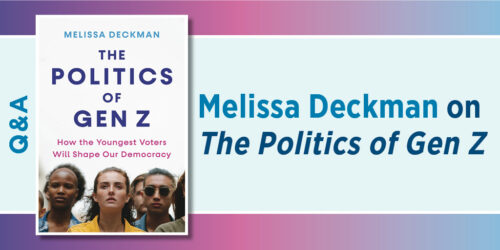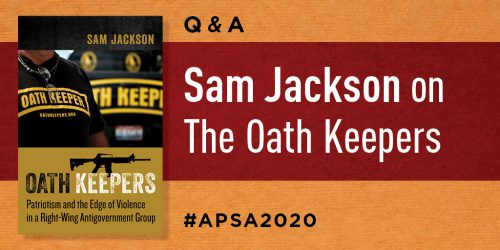Q&A: Patrick J. Charles on Vote Gun

Today, gun control is one of the most polarizing topics in American politics. However, before the 1960s, positions on firearms rights did not necessarily map onto partisan affiliation. What explains this drastic shift? In Vote Gun: How Gun Rights Became Politicized in the United States, Patrick J. Charles charts the rise of gun rights activism from the early twentieth century through the 1980 presidential election. But why did he stop there? In this Q&A, Charles speaks to why he chose to look at this issue from a historical perspective, why the book stops in the eighties, and his plans for future writing on the topic.
Q: Vote Gun examines the political rise of gun rights as a voting issue in American politics. What prompted you to historically examine this topic?
Patrick J. Charles: I originally intended Vote Gun to be published in conjunction with my 2018 book, Armed in America: A History of Gun Rights from Colonial Militias to Concealed Carry. Vote Gun was going to be a macro history of sorts on the politicization of gun rights up through the 2016 elections. But as I was doing research, I quickly realized that there was a larger story here that needed to be told—a story that will mean different things to different people. Certainly, several people had written on the politicization of gun rights in the late twentieth century. What virtually all these academics and writers got wrong, however, was the historical timeline of events, particularly the point in time when firearm owners were effectively organized into a political force. The politicization of gun rights did not begin in the late 1960s or early 1970s as these writers contended. Rather, it began five decades earlier, after the passage of the 1911 New York Sullivan Act, which Vote Gun historically details.
Q: Can you elaborate on why you think Vote Gun will mean different things to different people?
Charles: Well, if the reader is a supporter of reasonable gun control, they will likely perceive the story as a sad one, given that it is a history of how a small, insular minority of gun rights advocates were successful in repeatedly defeating firearms restrictions, whether at the federal, state, or local level. However, if the reader is a supporter of gun rights, they will likely perceive the story as a politically gleeful one. To them, this history is a story of political perseverance. And of course, as with any story, different readers will be drawn to different aspects of history. Some readers will be drawn to the narrative of how through much of the twentieth century, whether a politician was a Republican or Democrat had little bearing on whether they were for or against gun control. Meanwhile, other readers will be drawn to how virtually the same political talking points that were used against gun control in the early twentieth century are still in use today.
Q: Can you give an example of a political talking point that was used against gun control in the early twentieth century and is still in use today?
Charles: There are several examples to draw from, but the one that is perhaps most relevant for today is that “more guns equal less crime.” One can in fact trace this line of argument back to the mid- to late nineteenth century. However, up through the turn of the twentieth century, it was a line of argument that only an insular minority of Americans ever espoused, and it did not become politically weaponized until the National Rifle Association (NRA) began lobbying against gun controls in the mid-to-late 1920s. From the NRA’s perspective, even that early, the less gun control there was the better. This was the “American way.” Moreover, the NRA claimed, in those jurisdictions where people were encouraged to own and use firearms, there was far less criminal activity, as well as far fewer firearms-related injuries and deaths. Yet despite these assurances by the NRA, there was and remains to this day remains no substantiated scientific evidence to support it. Still, by just by floating the claim of “more guns equal less crime,” the NRA effectively convinced its supporters that society benefited significantly from having more firearms per capita.
Q: How long did it take for you to research and write Vote Gun? As I understand it, your research led you to archives and special collections across the country.
Charles: I spent roughly five years researching and writing Vote Gun, on and off, pulling from every archive and special collections library that I could. By my count, I either visited or consulted roughly fifty archives and special collections libraries. My first foray into the politicization of gun rights was published as a law review article back in 2014. It was one of two theses I wrote while pursuing an LLM at Queen Mary University in London. Vote Gun was largely inspired by that research. I was curious as to how far back in time gun rights advocacy groups like the NRA had lobbied for gun rights and against gun control. Again, as I noted earlier, several writers had put forward the claim that gun rights advocacy was not really a thing until the late twentieth century. These same writers claimed that the NRA was mainly a sporting, hunting, and marksmanship organization before the 1977 Cincinnati Revolt, where the NRA’s voting members reformed the organization to oppose all gun control. While there is certainly some truth to this historical claim, it is built more on myth than fact. Gun rights advocacy groups like the NRA have been involved in politics going back more than a century.
Q: Vote Gun ends after the 1980 election of President Ronald Reagan. Why did you choose to end the story there rather than continue it through 2016 as you originally intended?
Charles: The reason is essentially threefold. First, the year 1980 is crucial in explaining our current political divide over gun rights and gun control. Virtually all Republicans today support gun rights over gun control, and President Reagan’s 1980 election was the principal political event that made that happen. Second, the history of gun rights after 1980 is so rich with research material that I believe every decade from 1980 onward would require its own volume. So I plan on writing a second volume sometime in the future. But this brings me to the third reason why I stopped in 1980 and am currently holding off on writing the next volume; as of right now, many post-1980 political collections are either heavily redacted or not yet open to researchers. This makes it extremely difficult for historians to contextually reconstruct any post-1980 history with sufficient accuracy. The papers of former President Ronald Reagan are a principal case in point. But it is not just Reagan’s papers. The same holds true for the papers of former President George H.W. Bush, which contain several writings going as far back as the 1960s that are either heavily redacted or purposefully withheld from researchers. But rest assured, once these political collections start becoming fully available to researchers, I plan on researching and writing the next volume.

